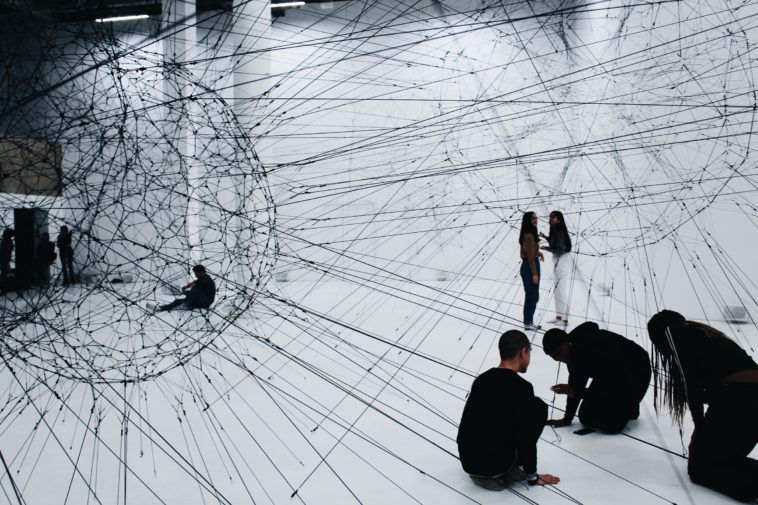Key Takeaways
- Interactive art transcends traditional boundaries, involving spectators directly.
- It’s a dialogue between art and participant, often using technology like sensors and computers.
- History traces back to early 20th century, but it flourished with digital technologies.
- Interactive art includes various forms like dance, music, and architecture.
- It’s influential in educational and public spaces, using tools like Arduino and Processing.
The Enthralling World of Interactive Art: A Personal Journey
Oh, the wonders of interactive art! It’s like stepping into a world where your presence transforms the canvas of creation. I still remember my first encounter with this art form. It was an installation that responded to my movements, changing colors and shapes as I danced around it. It felt like magic, a beautiful blend of art and technology, reacting to my very existence.
A Walk Through History
The journey of interactive art is quite fascinating. I was reading about Marcel Duchamp’s “Rotary Glass Plates” from the 1920s. Can you imagine? Art demanding you to be a part of it even back then! And then came the 1960s, a pivotal era. Artists, pushing against the solitary confines of traditional art, invited the audience to join in. It was like a rebellion, but with brushes and sensors instead of placards.
The Digital Blossoming
Ah, the digital age! It’s like a playground for interactive artists. The late 1990s were revolutionary. Computers and internet connectivity opened floodgates of creativity. Museums started embracing this new genre, dedicating entire exhibits to it. I recall an augmented reality game I once played in a gallery – it was not just art; it was an adventure!
Forms and Tools: A Diverse Palette
Interactive art isn’t just one thing. It’s like a chameleon, changing forms – from dance to architecture. The tools artists use are just as diverse. Arduino, Processing – these aren’t just tools; they’re keys to unlock creativity. They transform ideas into interactive poetry.
The Impact: More Than Meets the Eye
This art form does something extraordinary. It doesn’t just hang on a wall; it engages, converses, and evolves with its audience. It’s a living, breathing entity. Some say the real art lies not in the final product but in the rules that shape its interaction. Isn’t that a thought-provoking perspective?
Events and Places: Celebrating Interactivity
Festivals like Prix Ars Electronica are like pilgrimages for enthusiasts. And it’s not just limited to galleries. Airports, public spaces, even building facades are turning into canvases for interactive installations.
Reflecting on the Journey
As I delve deeper into the world of interactive art, I realize it’s more than just art. It’s a dialogue, a dance between creator, spectator, and technology. Each installation I’ve encountered has been a unique conversation, a story waiting to unfold. The beauty of it? You’re not just witnessing art; you’re a part of it.
Frequently Asked Questions
1. What is interactive art?
Interactive art is a form of art where the audience participates, influencing the outcome through various means like motion sensors or input devices.
2. How did interactive art start?
Early examples date back to the 1920s, but it gained momentum in the 1960s as artists sought more audience involvement in their works.
3. What technologies are used in interactive art?
Technologies include sensors, computers, programming languages like Max/MSP, Processing, and hardware like Arduino for creating responsive environments.
4. Where can one experience interactive art?
Interactive art is found in museums, galleries, public spaces, and festivals like Prix Ars Electronica.
5. How does interactive art differ from traditional art?
Unlike traditional art, which is usually a one-way observation, interactive art requires and evolves with the audience’s participation, making each experience unique.





